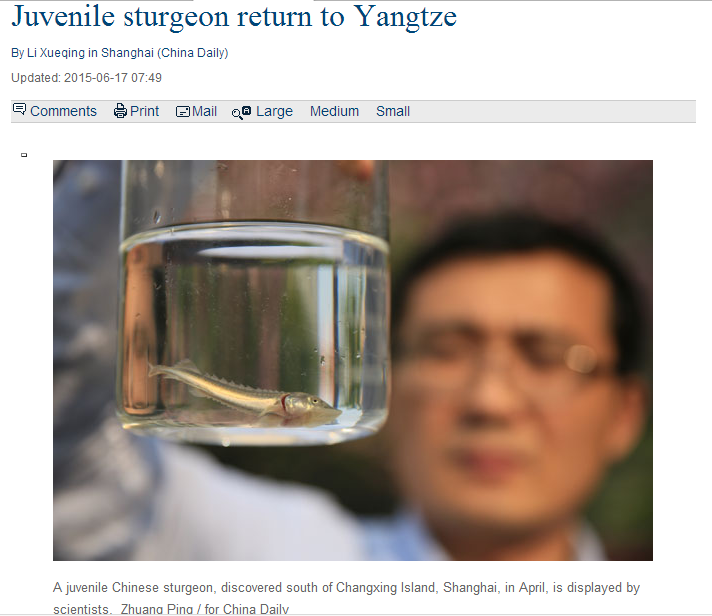


Juvenile Chinese sturgeon have reappeared in the mouth of the Yangtze River after two years of no evidence of spawning.
The first juvenile Chinese sturgeon was discovered to the south of Shanghai's Changxing Island on April 16 by researchers at the East China Sea Fisheries Research Institute. The researchers then found more juvenile fish in the same waters in May, said Zhuang Ping, deputy director of the institute.
This was a major discovery, given that no spawning was observed at the spawning site near the Yangtze River's Gezhou Dam for the past two years.
'It may suggest that Chinese sturgeon have found a new spawning site in the lower reaches of the river far from the dam, or the fish have started their spawning season earlier,' Zhuang said.
Chinese sturgeon live in the sea but migrate about 2,800 km to the upper reaches of the Yangtze River in autumn to reproduce after they mature.
However, the path has been blocked since 1981, when the Gezhou Dam was completed in the middle of the river. A small number of the fish have found a new spawning site downriver from the dam. The juvenile fish are expected to return to the mouth of the river in May next year.
No juvenile fish were found in the mouth of the Yangtze River in the first half of last year. The first juvenile Chinese sturgeon this year were discovered one month earlier than in previous years, the earliest recorded, Zhuang said.
The fish were 10 cm long - 5 cm shorter than normal - as were others found this year.
The data suggest that Chinese sturgeon have either shortened their migration and found a new spawning site nearer to the mouth of the Yangtze or spawned earlier this year in the old site, Zhuang said.
Chinese sturgeon, nicknamed 'aquatic panda', date back 140 million years, when dinosaurs roamed the Earth. But their productive and living environment has been worsened by many factors, including pollution, the building of dams, busy shipping and excessive fishing in the river.
It was listed as a top-level wild species under State protection in 1988. Researchers succeeded in the artificial insemination and spawning of cultured Chinese sturgeons in 2009. Since then, the fish, of all sizes and ages, have been released into the river every year to save the species from extinction.
Contact the writer at lixueqing@chinadaily.com.cn